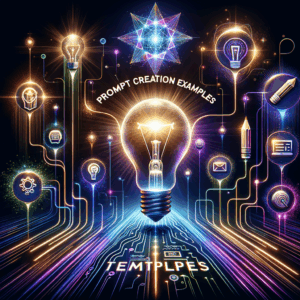
Prompt Engineering: Master The Effortless Art Today!
- Understanding Prompt Engineering
- The Importance of Prompt Engineering
- Use Cases of Prompt Engineering
- Elements of Effective Prompt Engineering
- Clarity
- Context
- Specificity
- Examples
- Testing and Iteration
- Crafting Effective Prompts: A Step-by-Step Approach
- Step 1: Define Your Goal
- Step 2: Identify Key Elements
- Step 3: Choose Your Wording Wisely
- Step 4: Test Your Prompt
- Step 5: Refine and Repeat
- Tools for Prompt Engineering
- Common Mistakes in Prompt Engineering
- Vague Requests
- Overcomplicating Prompts
- Ignoring the AI’s Limitations
- Failing to Iterate
- Future Trends in Prompt Engineering
- Increased Automation
- Greater Personalization
- Enhanced Collaboration
- Integration with Other Technologies
- Conclusion
- FAQs
- References
Understanding Prompt Engineering
In today’s digital landscape, prompt engineering has emerged as a crucial skill. It plays an essential role in how we interact with artificial intelligence (AI) systems, especially in natural language processing (NLP). But what exactly does prompt engineering mean? Simply put, it refers to crafting instructions or queries that effectively guide AI models. By mastering prompt engineering, you can extract desired outcomes more efficiently from AI.
Prompt engineering blends creativity with technical skills. It requires you to understand both the limitations and capabilities of AI models. As AI continues to evolve, being adept at prompt engineering helps you stay ahead. This skill allows you to maximize the potential of AI systems by ensuring they produce relevant, contextually appropriate responses.
The Importance of Prompt Engineering
You might wonder why prompt engineering matters. Effective prompts can significantly enhance the quality of AI-generated content. When you use a well-crafted prompt, you provide clarity about your expectations. This precision minimizes misunderstandings and irrelevant outputs.
Furthermore, as businesses increasingly rely on AI for customer service, content creation, and data analysis, effective prompt engineering becomes crucial. The better you guide the AI, the more value you derive from its capabilities. In essence, skilled prompt engineers can save time and resources while obtaining high-quality results.
Use Cases of Prompt Engineering
Several industries benefit from prompt engineering. Below are some prominent use cases:
1. Content Creation: Writers and marketers use prompt engineering to generate blog posts, advertisements, and social media content.
2. Customer Support: Companies deploy AI chatbots that respond to customer inquiries with tailored responses based on effective prompt engineering.
3. Data Analysis: Analysts use prompts to query databases, extracting meaningful insights while minimizing noise.
4. Education: Instructors use AI-driven platforms to create personalized learning experiences. Effective prompts can tailor questions and materials to different learning styles.
Understanding these applications showcases how versatile and necessary prompt engineering is in various disciplines.
Elements of Effective Prompt Engineering
Creating effective prompts requires consideration of several elements. Each plays a significant role in how well an AI model responds. Let’s explore these elements.
Clarity
Clarity is paramount. Ambiguities in your prompts can lead to confusing results. For example, instead of asking, “Tell me about science,” you could specify, “Explain the theory of relativity in simple terms.” Clear instructions guide the AI toward your expected outcome.
Context
Providing context enhances the AI model’s understanding. It helps the model connect the dots between information and form appropriate responses. For instance, stating, “Write a professional email addressing a customer’s complaint” provides context that drives better output.
Specificity
Being specific in your prompt yields more targeted results. Instead of asking, “What are health benefits?” consider saying, “List five health benefits of drinking green tea.” Specific prompts help you lock in the type of information you seek.
Examples
Adding examples can clarify expectations further. If you want the AI to generate a short story, you might include an introductory sentence. For instance, “Write a short story that begins with, ‘On a stormy night, a mysterious figure appeared at the door.’” This example frames the response more effectively.
Testing and Iteration
Finally, iteration is critical. You often must refine and test your prompts to observe how well they perform. Don’t hesitate to try different wordings or structures. This experimentation ultimately leads to better outcomes.
Crafting Effective Prompts: A Step-by-Step Approach
The process of crafting effective prompts may seem daunting, but breaking it down into steps makes it manageable. Here’s a simple approach to get you started.
Step 1: Define Your Goal
Start by clarifying what you want from the AI. Ask yourself, “What specific task do I need the AI to perform?” A defined goal gives focus and direction to your prompts.
Step 2: Identify Key Elements
Once you’ve defined your objective, identify key elements that the AI should address. List out essential topics or points you want the response to cover.
Step 3: Choose Your Wording Wisely
Select words that accurately convey your message. Use clear and simple language. Avoid jargon unless necessary for your audience.
Step 4: Test Your Prompt
Put your first draft to the test. Run the prompt through the AI model and analyze the output. Does it meet your expectations? If not, think about what needs adjustment.
Step 5: Refine and Repeat
Based on your findings, modify your prompt for clarity, context, and specificity. Tweak it and test again. This process often takes multiple iterations to achieve the desired response.
Tools for Prompt Engineering
Several tools can aid in the prompt engineering process. These tools assist you in crafting better prompts and generating higher-quality outputs. Here are some commonly used tools:
| Tool | Description |
|—————-|——————————————————-|
| OpenAI GPT-3 | A powerful language model that generates human-like text. Perfect for experimenting with prompts. |
| ChatGPT | An interactive AI chatbot that replies conversationally based on prompts. Ideal for quick answers and brainstorming. |
| PromptBase | A platform for discovering and sharing effective prompts across various AI applications. |
| AI Dungeon | A creative storytelling platform that lets you engage with AI in narrative contexts. Great for long-form content. |
| Replika | An AI companion that converses based on user prompts, giving insight into emotional responses. |
Utilizing these tools can enhance your experience with AI. They provide a practical way to see how different prompts yield diverse outcomes.
Common Mistakes in Prompt Engineering
Even seasoned prompt engineers make mistakes. Here are some common pitfalls to avoid:
Vague Requests
Vague prompts lead to unpredictable results. Being specific reduces misunderstandings. Always aim for clarity in what you’re asking.
Overcomplicating Prompts
More information isn’t always better. Complicated instructions can confuse the AI. Keep it simple while providing enough detail to guide the output.
Ignoring the AI’s Limitations
Understand the limitations of the AI model you’re using. Not all models can handle complex logic or niche topics effectively. Acknowledge these constraints to set realistic expectations.
Failing to Iterate
Don’t fall into the trap of using a prompt once and forgetting about it. Effective prompt engineering often involves refining based on previous outcomes. Continuous improvement yields better results.
Future Trends in Prompt Engineering
As technology continues to progress, prompt engineering will evolve too. Here are some future trends to watch:
Increased Automation
With advancements in AI, we may see more automated systems for prompt generation. These tools could suggest optimal prompts based on user inputs and previous data.
Greater Personalization
AI will likely become more adept at customizing responses based on user preferences. This means prompt engineering will adapt to cater to individual styles and needs.
Enhanced Collaboration
Collaborative tools will evolve, allowing teams to work together on crafting effective prompts. This can lead to richer ideas and better outcomes.
Integration with Other Technologies
As AI integrates with other technologies like augmented reality (AR) and virtual reality (VR), prompt engineering will adapt to new formats and interfaces. Expect more immersive experiences driven by thoughtful prompting.
Conclusion
Prompt engineering might seem like a niche skill, but mastering it can unlock powerful potential. By focusing on clarity, context, and specificity, you can guide AI to produce exceptional outputs. Experimentation and iteration are crucial in this journey. As AI technology advances, staying abreast of trends helps you remain competitive and effective in your prompts. Start your prompt engineering journey today, and watch as the AI responds to your requests with newfound precision and creativity.
FAQs
1. What is prompt engineering?
Prompt engineering involves crafting instructions that guide AI models to produce desired responses effectively.
2. Why is prompt engineering important?
It enhances the quality of AI-generated content and ensures the AI produces relevant, context-appropriate results.
3. What are some common use cases for prompt engineering?
Its main applications include content creation, customer support, data analysis, and personalized education.
4. How can I get started with prompt engineering?
Define your goal, identify key elements, test your prompts, and refine them based on results.
5. What tools can I use for prompt engineering?
Tools like OpenAI GPT-3, ChatGPT, and PromptBase can help you craft effective prompts.
6. What are some common mistakes in prompt engineering?
Common mistakes include vague requests, overcomplicating prompts, ignoring the AI limitations, and failing to iterate.
7. How does AI enhance prompt engineering?
AI can automate prompt suggestions and produce responses tailored to user needs based on previous input.
8. Is there a specific language to use in prompts?
Clear and simple language is preferred. Avoid jargon unless necessary for your audience.
9. How often should I refine my prompts?
Iteration is vital. Always refine your prompts based on feedback and results to improve quality.
10. What future trends should I watch for in prompt engineering?
Expect increased automation, greater personalization, collaborative tools, and integration with emerging technologies.
References
– OpenAI. (n.d.). Retrieved from https://openai.com
– ChatGPT. (n.d.). Retrieved from https://chat.openai.com
– PromptBase. (n.d.). Retrieved from https://promptbase.com
– AI Dungeon. (n.d.). Retrieved from https://play.aidungeon.io
– Replika. (n.d.). Retrieved from https://replika.ai

